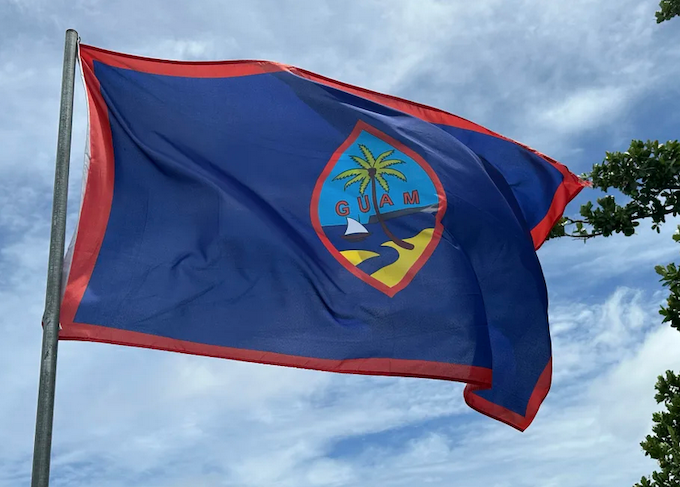
By Eleisha Foon, RNZ Pacific journalist in Guam
The Chamorros are the indigenous people of the Mariana Islands — politically divided between Guam and the Northern Mariana Islands in Micronesia.
Today, Chamorro culture continues to be preserved through the sharing of language and teaching via The Guam Museum.
But the battle to be heard and have a voice as a US territory remains an ongoing struggle.
Chamorro cultural historian and museum curator Dr Michael Bevacqua says Chamorro people in Guam have a complex relationship with the US — they consider themselves as Pacific islanders, who also happen to be American citizens.
Bevacqua says after liberation in July 1944, there was a strong desire and pressure among Chamorros to “Americanise”.
Chamorros stopped speaking their language to their children, as a result. They were also pressured to move to the US mainland so the US military could build their bases and thousands of families were displaced.
“There was this feeling that being Chamorro wasn’t worth anything. Give it up. Be American instead,” he says.
‘Fundamental moment’
For the Chamorros, he explains, attending the Festival of Pacific Arts in the 1970s and 1980s was a “very fundamental moment”.
It allowed them to see how other islanders were dealing with and navigating modernity, he adds.
“Chamorros saw that other islanders were proud to be Islanders. They weren’t trying to pretend they weren’t Islanders,” Dr Bevacqua said.
“They were navigating the 20th century in a completely different way. Other islanders were picking and choosing more, they were they were not completely trying to replace, they were not throwing everything away, they trying to adapt and blend.”
Being part of the largest gathering of indigenous people, is what is believed to have led to several different cultural practitioners, many of whom are cultural masters in the Chamorros community today, to try to investigate how their people expressed themselves through traditional forms.
“And this helped lead to the Chamorro renaissance, which manifested in terms of Chamorros starting to carve jewellery again, tried to speak their language again, it led to movements for indigenous rights again.
“A lot of it was tied to just recognise seeing other Pacific Islanders and realising that they’re proud to be who they are. We don’t have to trade in our indigenous identity for a colonial identity.
“We can enjoy the comforts of American life and be Chamorro. Let’s celebrate who we are.”

Inafa’ maolek
Guam’s population is estimated to be under 170,000, and just over 32 percent of those are Chamorro.
Dr Bevaqua says respect and reciprocity are key values for the Chamorro people.
If someone helps a Chamorro person, then they need to make sure that they reciprocate, he adds.
“And these are relationships which sometimes extend back generations, that families help each other, going back to before World War II, and you always have to keep up with them.
“In the past, sometimes people would write them down in little books and nowadays, people keep them in their notes app on their phones.”
But he says the most important value for Chamorros now is the concept of inafa’ maolek.
Inafa’ maolek describes the Chamorru concept of restoring harmony or order and translated literally is “to make” (inafa’) “good” (maolek).
Relationship with community
“This is sort of this larger interdependence and inafa’ maolek the most fundamental principle of Chamorru life. It could extend between sort of people, but it can also extend as well to your relationship with nature, [and] your relationship to your larger community.”

He says the idea is that everyone is connected to each other and must find a way to work together, and to take care of each other.
He believes the Chamorro people are always held back because as a territory, Guam does not have an international voice.
“The United States speaks for you; you can yell, shout, and scream. But as a as a territory, you’re not supposed,to you’re not supposed to count, you’re not supposed to matter.”
He adds: “That’s why for me decolonisation is essential, because if you have particular needs, if you are an island in the western Pacific, and there are challenges that you face, that somebody in West Virginia, Ohio, Utah, Arizona and California may not care about it in the same way, and may be caught up in all different types of politics.
“You have to have the ability to do something about the challenges that are affecting you. How do you do that if 350 million people, 10,000 miles (16,000 km) away have your voice and most of them don’t even know that they hold your voice. It sucks.”
This article is republished under a community partnership agreement with RNZ.










































